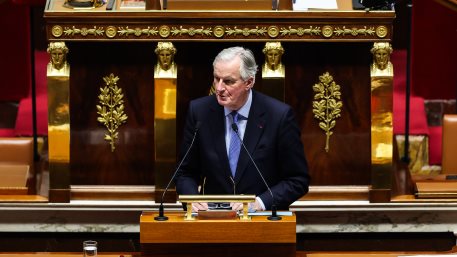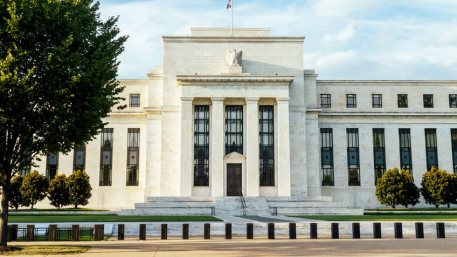
In what looks like arguably the most action-packed week of the year, the most significant event is undoubtedly going to be the FED's monetary policy decision, which is scheduled to take place this Wednesday.
The general market forecasts project a likely reduction of the interest rate by the Federal Open Market Committee, as a response to other central banks’ recent easing of their respective monetary policies.
Currently, the federal funds rate is at 2.00 per cent, and the consensus expectations project a likely reduction by 25 basis points to 1.75 per cent. Such a course of action will provide more favourable conditions for stimulating inflationary growth.
At the present rate, inflation in the US remains close to, but below, the 2 per cent symmetric target-level, which is evocative of subdued price stability.
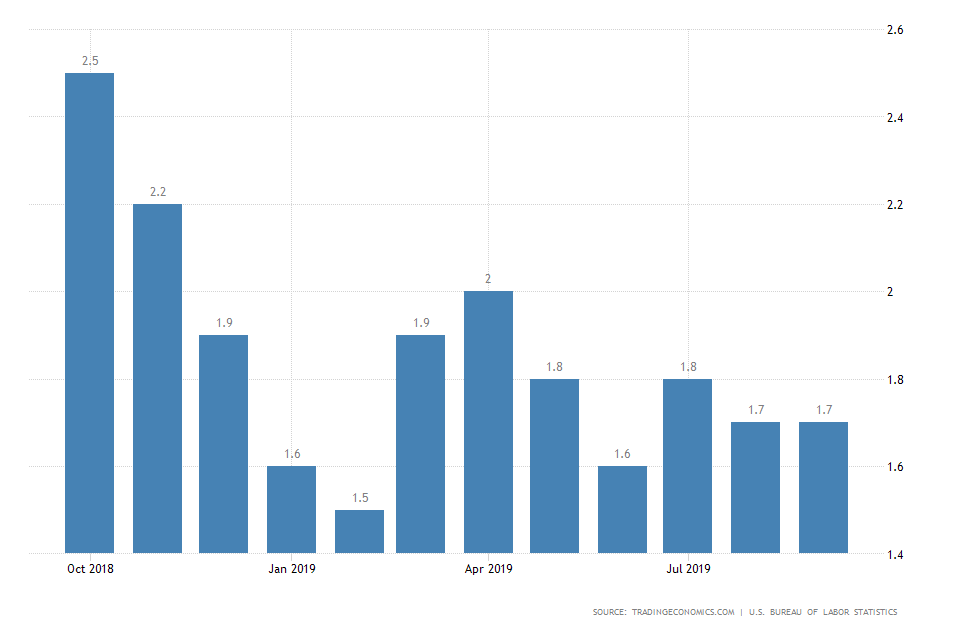
The muted inflation is resulting from waning business confidence, which in turn is caused by the heightened trade uncertainty globally.
The prolongation of the impasse between the US and China’s trade negotiations is deterring investors’ spending. Consequently, the impeded business activity is also harming the price stability in the country.
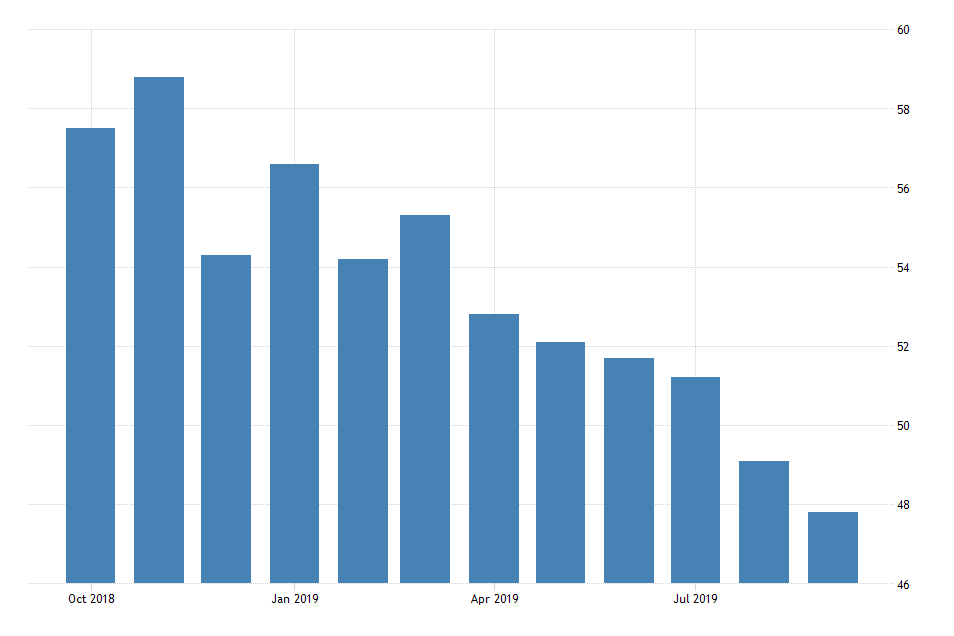
On the other hand, however, the US labour market is currently performing exceptionally well, and it is leaning close to full employment.
Recent job gains and sizable wages growth could potentially discourage the FOMC from implementing any significant changes to the monetary policy at the present rate.
The Committee could decide to remain watchful by the end of the year as the fourth quarter is typically the busiest period of the year, heightened business activity-wise, and evaluate the near-term developments in the economy.
During the last monetary policy meeting on September, 2 out of the Committee's ten members - Esther L. George and Eric S. Rosengren – voted against the ultimate decision to cut the federal funds rate at that time.
This friction of opinions within the Committee could have possibly increased in the previous two months and turn into the most crucial aspect of FOMC’s Wednesday decision.
Meanwhile, the EURUSD opened this week’s trading session relatively quietly. The price of the pair is currently consolidating close to the 1.10906 support level, which is also the 38.2 per cent Fibonacci retracement level.
We expect the price to have already reached a dip in the recent correction that was initiated last week.
Given that the general market sentiment remains predominantly bullish, we expect the price to rebound from the support as mentioned above and continue trading higher by the end of the current week.
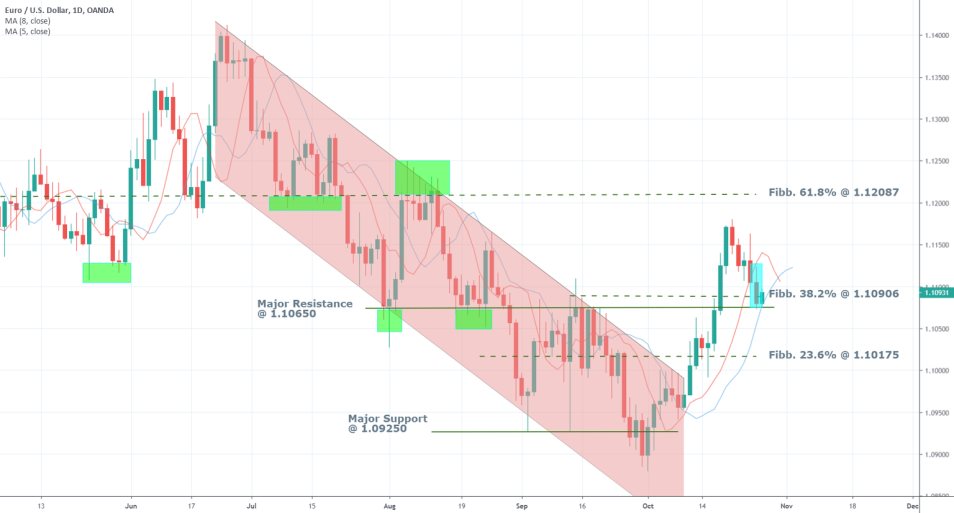
Trendsharks Premium
Gold is undergoing a correction, as investors take profits to offset losses from falling stock prices, impacting their margins. However, we anticipate a renewed wave of [...]
The Swiss stock market index is mirroring its global counterparts, such as Germany 40 and US100, experiencing a sharp decline following the announcement of new [...]
We’re analyzing the weekly chart to grasp the broader market trend. Over the past three years, the US30 index has surged by 17,000 points, often resembling a nearly straight [...]
Over the past week, the DAX has experienced a sharp decline, plunging by an astonishing 3,400 points. This downward movement is not isolated, as its international counterparts, such as the UK100 and US100, are also facing significant [...]
EURUSD recently formed a double top at 1.0930, signaling a potential trend reversal, and has since begun a correction. After a 600-pip rally since early March, a pullback at this stage is both expected and healthy. Given these conditions, we are placing a [...]
Since early March, EURJPY has surged nearly 1,000 pips, providing us with several excellent trading opportunities. However, as the rally matures, many early buyers are beginning to take profits, leading to a noticeable slowdown in the uptrend. On Friday, the pair formed a [...]
The AUDJPY currency pair continues to be dominated by bullish momentum, as multiple golden cross patterns reaffirm the strength of the ongoing uptrend. Despite this, we are witnessing a much-needed [...]
The EURAUD currency pair appears to be undergoing a trend reversal, signaling a potential shift in market direction. A notable technical development is the formation of a Death Cross on the chart, a widely recognized bearish indicator that typically suggests a [...]
After securing an impressive 200-pip profit last week, the EURJPY currency pair is now undergoing a southward correction, retracing some of its recent gains. Despite this temporary pullback, the Golden Cross remains intact, reinforcing our view that the overall trend continues to be [...]
The appearance of a Golden Cross in Silver strengthens our analysis that the metal is currently in a strong uptrend, indicating further bullish momentum in the market. This technical pattern, where the short-term moving average crosses above the [...]
This trade presents a considerable level of risk and can be classified as an opportunistic move based on recent price action. The GBPUSD currency pair has experienced a substantial bullish rally, surging by nearly 500 pips in a strong upward movement. However, after this extended period of appreciation, the pair is showing signs of a potential [...]
The anticipated Death Cross on the SMI20 appears to be failing as price finds strong support at the 23% Fibonacci retracement level. After testing this area, the index has shown bullish strength, printing several large green candles, signaling an increase in [...]
A Golden Cross has just appeared on the USDJPY chart, signaling a potential bullish move. This technical pattern occurs when the 20 period moving average crosses above the 60 period moving average, a widely recognized indication of increasing [...]
After 2 months of a down trend, we finally see some indications of price recovery for Oil. The golden cross, a historic buy signal, supports this [...]
For the past month, the German DAX40 has experienced a remarkable 10% surge, reflecting strong bullish momentum. Despite ongoing market volatility and frequent pullbacks, every dip continues to attract fresh buyers, reinforcing the [...]
Oil continues its downward trajectory, despite occasional pullbacks. The overall trend remains bearish, reinforced by multiple Death Cross patterns, a classic sell signal indicating further weakness. Adding to this bearish outlook, the critical [...]
Over the past few days, gold has experienced a sharp decline of more than $100. This downturn can be attributed in part to traders securing profits to manage their margins, which are under strain due to the significant drop in major indices. Currently, gold has fallen below the [...]
The NASDAQ 100 index is showing strong bullish momentum, as evidenced by the formation of a Golden Cross on the chart. This classic buy signal occurs when the short moving average crosses above the long term moving average, suggesting that upward momentum is [...]
The EURAUD currency pair has encountered a significant resistance level, failing to break above the critical 61% Fibonacci retracement level. This suggests that bullish momentum is weakening, reinforcing the case for a potential downward move. Given this technical setup, we favor entering a [...]
The UK100 is experiencing a remarkable rally! Over the past few weeks, the British stock market index has surged nearly 800 points. Each minor dip has attracted more buyers, fueling the bullish momentum. However, since last week, we’ve observed a slight [...]




















